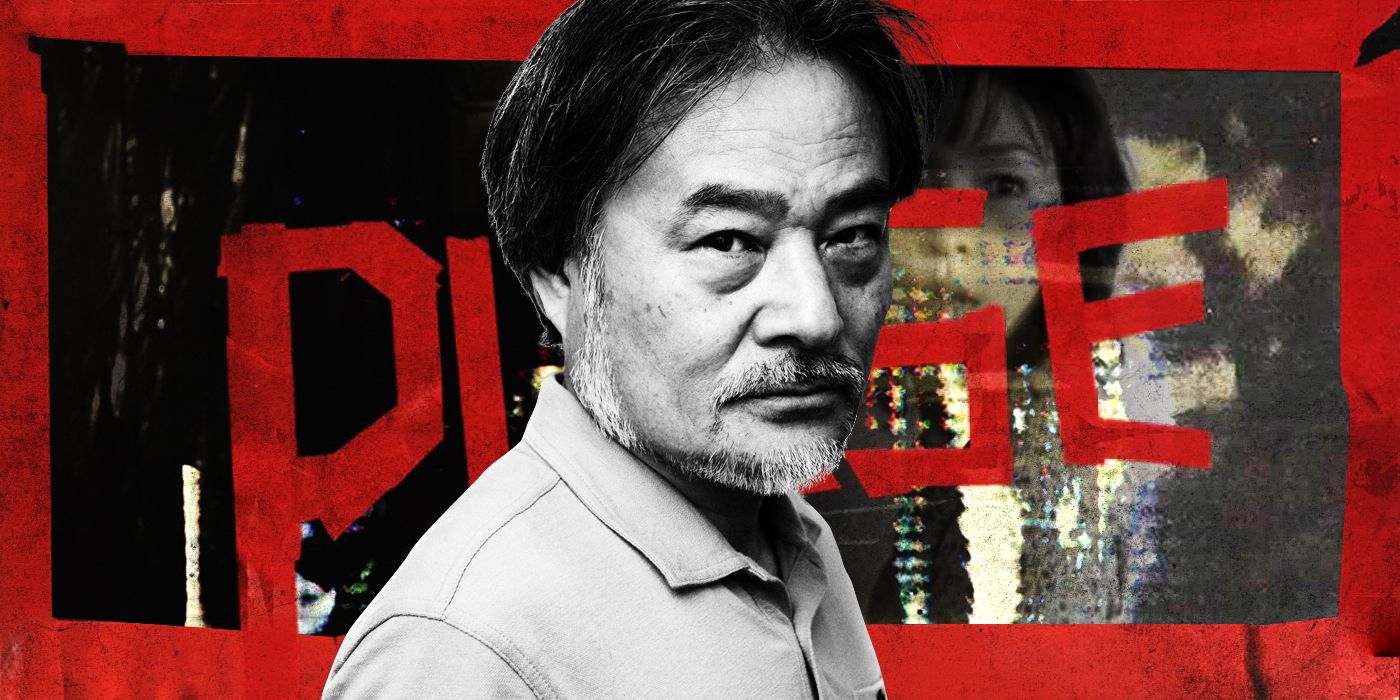Since the dawn of cinema, filmmakers have tried every possible way of scaring audiences; from heart-racing jump scares to disgusting body horror like The Substance to the creeping suspense of the unseen, horror has tapped into people’s worst fears. But director Kiyoshi Kurosawa took an unusual approach in his 2001 techno-horror film Pulse, the follow-up to his equally unsettling Cure (1997). In what is one of the most terrifying scenes in horror, Kurosawa locked into a primal human fear in the film’s most memorable paranormal scene. Some moments in horror movies never stop being scary, no matter how many times we watch them, and this is the perfect example. And if you haven’t seen this J-horror masterpiece already, go check it out before reading on, as we get into spoiler territory.
Pulse follows two different story lines which take place in Tokyo. In one, a plant store worker, Taguchi (Kenji Mizuhashi), goes missing while he is working on a computer disk, and his coworkers begin to receive cryptic messages from him that lead them to discover he has died by suicide. These events also launch a chain reaction of disappearances. The second subplot follows a university student, Ryosuke (Haruhiko Katu), whose new Internet provider begins to act strangely, and soon enough others are disappearing en masse, seemingly into the very walls of their apartments. It is ultimately revealed that ghosts are invading the physical world through technology, preying on lonely and isolated people. This is a heavy, existential film that feels deeply isolating and plants a feeling of paranoia around technology’s influence on the viewer.
‘Pulse’ Scares Through the Uncanny
In the scene in question, Toshio Yabe (Masatoshi Matsuo) has just been in Taguchi’s apartment, where he saw Taguchi’s ghost and a dark stain on the wall behind where he hung himself. In an unsettled state of mind, Yabe starts to walk back home but notices a door lined with red tape in the apartment complex. Remembering a note he saw in Taguchi’s apartment mentioning a “forbidden room,” he decides to enter the door. Inside, he goes down a set of stairs into a drab basement space. While staring at the opposite wall, he turns around to see a woman slowly materialize out of the shadows across the room. She walks towards him in slow-motion, at one point tripping and wavering over the ground, catching her balance, then continuing towards him. When Yabe scrambles behind the couch, we see her hands, then her face, peeking over the edge of the couch. Yabe screams, and then the scene fades to black.
Technically speaking, this is a very simple scene. There is no jump scare, and yet it is still utterly terrifying. Several aspects of the scene work together to scare the viewer in a very unusual way. For one, the woman’s ghost looks human. Her face isn’t pale with sunken eyes and bony cheeks. She is wearing heels and a dress and appears fully real. It is rather the way that she moves which is unsettling. She walks with static, jerking movements, her hands going straight out in a way that feels unhuman. She resembles a video game character or the replicants in Blade Runner — something just feels off, and there is an uncanny valley quality to her physicality. At the same time, she is absolutely silent, and appears weightless, as if she is performing ballet. On top of that, the score during this scene is a wailing, dissonant woman’s voice that adds to the inescapable sense of dread. This scene effectively conveys Yabe’s feeling of being trapped in a room with something that doesn’t behave like a human. Yabe is afraid of the vision itself, not what the ghost could actually do to him.
‘Pulse’ is More Relevant Than Ever 23 Years Later
This ghost scene effectively sets the disturbing tone of Pulse, and is more relevant in 2024 than ever. The ghost’s unnatural, robotic movements make her appear like something artificial, perhaps created by AI. She is the perfect metaphor for the Internet’s malevolent qualities in the film, where technology spreads an inescapable sense of despair in the characters. These themes feel unnerving to watch now, in a post-pandemic world that has seen the effects of isolation and over-reliance on technology, as well as AI blurring the lines of what we know is real. Not only is Pulse one of the scariest Japanese horror movies in existence (which is saying a lot), but the film also raises the bar for supernatural thrillers. With Pulse, as well as his twisted thriller Cure, Kurosawa proved that sometimes strange, uncanny moments are just as effective at terrifying the viewer as shocking jump scares. Pulse is the perfect Halloween season watch. For the full effect, watch this movie alone on your computer late at night. You might regret it in the best way possible.
Pulse is available to watch on Max.























































![Social Media Spring Cleaning [Infographic] Social Media Spring Cleaning [Infographic]](https://imgproxy.divecdn.com/9e7sW3TubFHM00yvXe5zvvbhAVriJiGqS8xmVFLPC6s/g:ce/rs:fit:770:435/Z3M6Ly9kaXZlc2l0ZS1zdG9yYWdlL2RpdmVpbWFnZS9zb2NpYWxfc3ByaW5nX2NsZWFuaW5nMi5wbmc=.webp)
![5 Ways to Improve Your LinkedIn Marketing Efforts in 2025 [Infographic] 5 Ways to Improve Your LinkedIn Marketing Efforts in 2025 [Infographic]](https://imgproxy.divecdn.com/Hv-m77iIkXSAtB3IEwA3XAuouMwkZApIeDGDnLy5Yhs/g:ce/rs:fit:770:435/Z3M6Ly9kaXZlc2l0ZS1zdG9yYWdlL2RpdmVpbWFnZS9saW5rZWRpbl9zdHJhdGVneV9pbmZvMi5wbmc=.webp)














